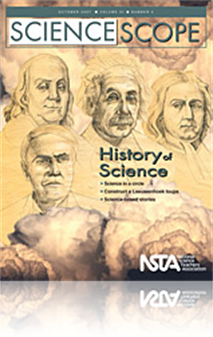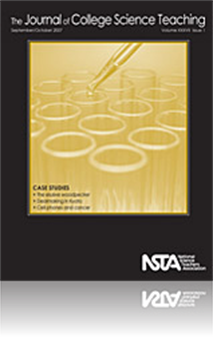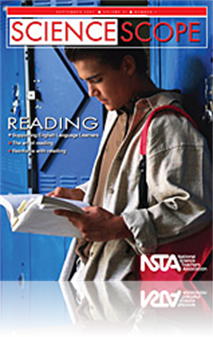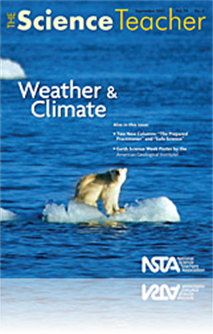All Resources
Journal Article
Scope on Safety: Hammering home Earth-science safety
Kids love to cut up, tear apart, and smash things in order to study them. This is one reason they get so excited about the opportunity to study rocks and minerals in the lab or out in the field. Although this can certainly be fun and fuel their curio...
Journal Article
Science Sampler: Doing sophisticated science simply—Help students understand the nature of science
We all recognize the power of inquiry-based instruction when implemented in our classrooms. It engages students and motivates them to actively participate in their learning. But do our students develop a deep understanding about the nature of science...
Journal Article
Narrative informational book circles are the product of our efforts to combine current research in learning and cognition with integrated science and language-arts activities. They present instructional strategies that support students as they make c...
Journal Article
Society for College Science Teachers: Please <em> Don’t </em> Read the Text Before Coming to Lecture
It’s common for college professors to require students to complete a reading from the textbook prior to coming to class. Most professors who maintain syllabi for their courses list the chapters or page numbers that class members should read ahead o...
Journal Article
Teacher’s Toolkit: Improving science instruction through effective group interactions
Cooperative learning is a popular teaching strategy in which groups of students work together to accomplish a common goal, aiding them in developing a comprehensive understanding of a topic or concept. This strategy enables students of diverse backgr...
Journal Article
Guest Editorial: NSF Research Outreach Requirements—An Opportunity for <em> JCST </em> Readers
A recent issue of the American Physical Society newsletter (2007) described the various reactions that research physicists have to the NSF requirement that grant applications seeking support for basic research include a section describing the broader...
Journal Article
To understand more about faculty perceptions of the instructional benefits of and barriers to using case studies, the authors surveyed 101 science faculty at universities and colleges in the United States and Canada. The results provided evidence tha...
Journal Article
Fall Colors, Temperature, and Day Length
Along with the bright hues of orange, red, and yellow, the season of fall represents significant changes, such as day length and temperature. These changes provide excellent opportunities for students to use science process skills to examine how abio...
Journal Article
Giving Birth to Someone Else’s Children? A Case of Disputed Maternity
Most students have heard about situations in which the paternity of a child is questioned; in a surprising reversal, in this case study, maternity is in question. Designed for an introductory biology course, the case involves concepts from genetics, ...
Journal Article
A Cooperative Classroom Investigation of Climate Change
Scientists have a particularly difficult time explaining warming trends in Antarctica—a region with a relatively short history of scientific observation and a highly variable climate (Clarke et al. 2007). Regardless of the mechanism of warming, how...
Journal Article
Editorial: The Boy Scouts Said It Best—Some Advice on Case-Study Teaching and Student Preparation
Students are seldom prepared. They have many things, most not related to school, on their minds in college. In large classes in particular, student attendance falls off precipitously with each passing week of the semester, regardless of the skill of ...
Journal Article
Perspectives: Action Research: Inquiring Into Science Teaching and Learning
Teachers and schools are required by the No Child Left Behind Act to use research-based instructional practices. Although we often think of research as something university professors do, teachers can contribute to the research base on effective inst...







